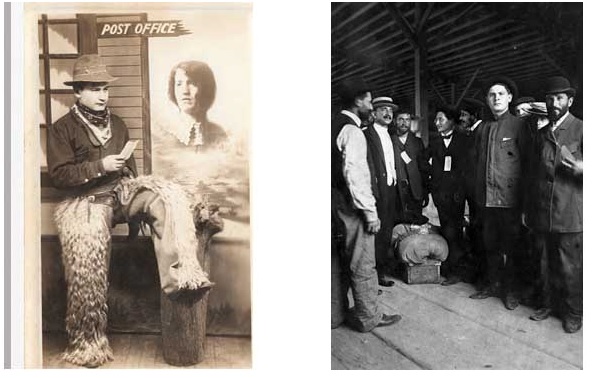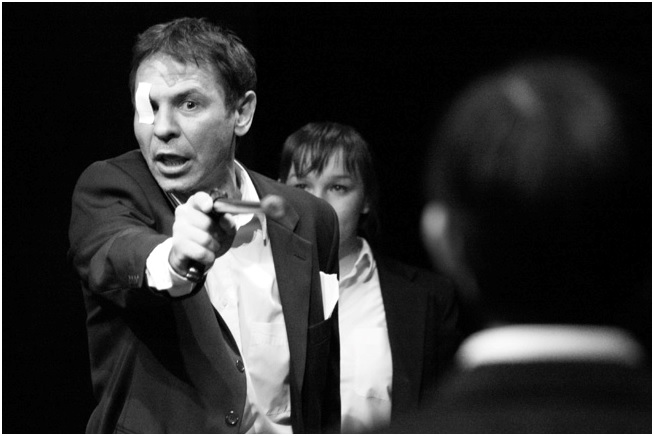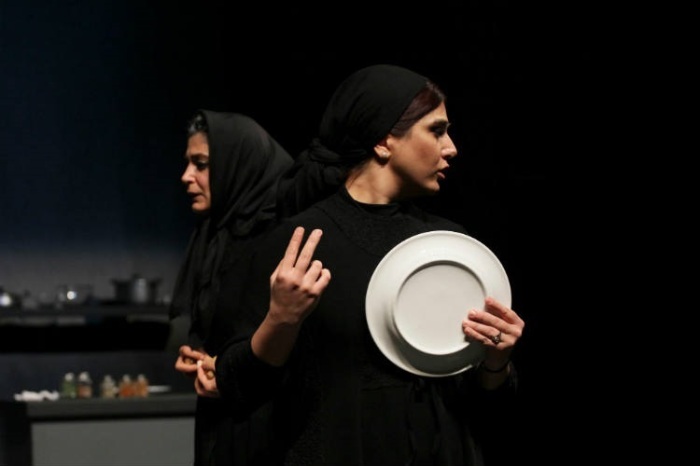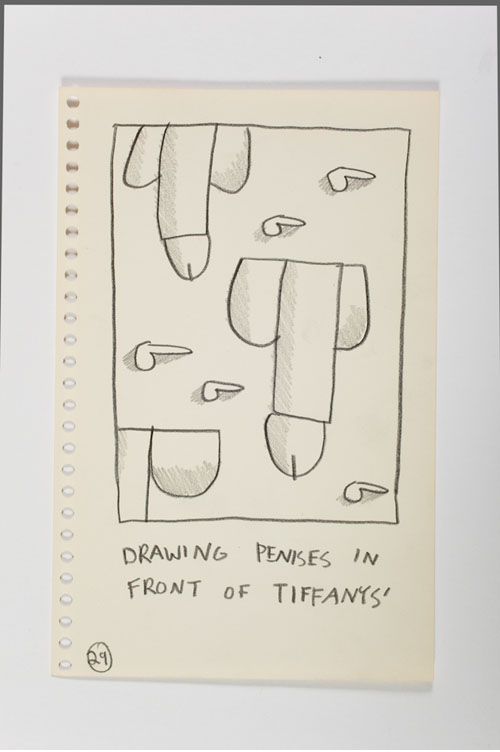
Copyright 2012, 2017 Paul Ben-Itzak
First published on January 19, 2012. Like what you read? Then please stop “liking” us and help pay for it. Designate your PayPal donation to paulbenitzak@gmail.com, or e-mail us at that address to learn about donating in Euros or by check.
FORT WORTH, Texas — Heritage is a messy business, especially in a country built out of multiple heritages. There may be no more vivid microcosm of this principle right now in the United States than that found in the few blocks that make up the Cultural District of this cosmopolis which calls itself “Cowtown” with pride and whose concentration of world-class museums and Western heritage seems to justify the city motto, “Cowboys & Culture.”
Monday at the Will Rogers Memorial Center — named after the American cowboy journalist, humorist, actor and philosopher — the Fort Worth Stock Show & Rodeo, running through February 4, celebrated the opening of its 116th year with a Cowboys of Color Rodeo, aptly held on the day honoring Martin Luther King, who did more to emancipate African-Americans than any other American in the 20th century. Across Gendy Street, the Cowgirl Hall of Fame is honoring with her own exhibition (“The cowgirl who became a justice”) retired Supreme Court justice Sandra Day O’Connor, who, in voting to stop the Florida ballot re-count in the 2000 presidential election, helped enable the disenfranchisement of thousands of African-American voters. Right across the street, the Fort Worth Museum of Science and History is hosting an exhibition on George Washington — including the last intact set of his dentures — that acknowledges that the father of our country was also a slave holder, as well as an exhibition which recalls when Texas *campaigned* to bring a million immigrants into the U.S. through the port of Galveston… which was also a major entry for… slaves. And the Rodeo, meanwhile, seems to have forgotten that a founding principle of the nation whose Western heritage it celebrates was freedom of religious expression, which also means that the majority should not impose its religion on the minority; spectators for Cowboys of Color had no choice but to listen to the announcer open the event by invoking Jesus Christ before the first bull even hurtled out of the chute. (Here’s what Will Rogers said about religion: “I was raised predominantly a Methodist, but I have traveled so much, mixed with so many people in all parts of the world, I don’t know just what I am. I know I have never been a non-believer. But I can honestly tell you that I don’t think that any one religion is the religion.”)
Being American is not in itself often thought of as an ethnicity. And yet there seems to be at least one ethnic trait that most Americans have inherited: Bad teeth. This correspondent for one feels a little less self-conscious about his own dilapidated mashers after pondering a set of our founding father’s dentures and reading about his troubled dental history in “Discover the Real George Washington: New Views from Mount Vernon,” a touring exhibition on view at the Fort Worth Museum of Science and History through January 22. Most revelatory is the text accompanying the display of dentures (composed, by the way, of ivory, cow teeth, and human teeth; other sets also included hippo teeth — and none of the president’s eight dentures were made of wood). Beset by dental problems from his early 20s, by the time he was sworn in as the first president in 1789 General Washington had only one of his natural teeth remaining in his mouth, a possible explanation for his sallow cheeks, we’re told. (The exhibition also uses computer science to construct life-sized mannequins of the younger Washington from later portraits.) On another occasion, he provided a lesson in resourcefulness that perhaps ought to be included in our history books alongside Valley Forge for health-care strapped contemporary children to consider: Following his dentist’s instructions, Washington used wax and plaster of Paris to make a mold of the inside of his mouth to send away to the dentist. By the time he left office, all of Washington’s original teeth were gone.
Does the exhibition’s attempt to digest Washington as slave-holder have any teeth? Visitors can watch a series of video interviews with African-American scholars and others who differ on the degree to which perceptions of the president should be influenced by his having owned slaves. Most say it taints him, but one suggests that Washington wanted to free his household’s slaves, but most of them were owned by Martha Washington, and he couldn’t afford to buy their freedom from his wife.
 From the exhibition Forgotten Gateway: Coming to America Through Galveston Island. Images courtesy Fort Worth Museum of Science and History.
From the exhibition Forgotten Gateway: Coming to America Through Galveston Island. Images courtesy Fort Worth Museum of Science and History.
“Forgotten Gateway: Coming to America Through Galveston Island,” a massive exhibition running in the gallery next door to ‘Washington’ through April 1, does a much better job of balancing the pride and shame of American heritage related to immigration, devoting almost equal time to the slaves who were hauled in chains through this Texas Gulf port beginning in 1845, and the voluntary immigrants who decamped there through 1924, an immigration not merely welcomed by the nation and later state of Texas, but encouraged. At one point, we’re informed, the state launched a campaign to bring a million immigrants to Galveston. Even the railway companies pitched in, offering free jump on, jump off privileges so that the immigrants could explore the state at their leisure to pick a place to settle, where they could usually find low-cost housing. About the only immigrants who — late in the game, after 1913, when rules became stricter — had a harder time getting in were people like me: Jews, who some immigration officials claimed were shifty. (Perhaps tolerating invocations of Christ at Texas rodeos is one of the costs of our admission.) The exhibition even features a wall with an immigration timeline to which visitors can add their own family’s entry history with handy post-its. The only criticism I have of the exhibition is that it’s heavy on explanatory text, audio, photographs, and reproductions and very light on actual artifacts. A better bet is to head over to the Cattle Raisers Museum, housed in the same building, and into the legacy room, where “legacy drawers” contain photographs as well as personal memorabilia from pioneering cowboys and the occasional cowgirl.

One of the first things immigrant Charlie Hoffman (left) did after debarking at Galveston Island was to don cowboy gear so he could take a picture to send back home. Jewish immigrants (right) found it harder to gain entrance after 1913, with some officials labeling them slackers.
If you thought the cowboy was an artifact, then you’ve never been to the rodeo. I attended my first on Martin Luther King Day, when the 116-year-old Fort Worth Stock Show & Rodeo — one of the three largest in the U.S., running through Feb. 4 at the Will Rogers Memorial Center — offered as one of its opening events the Cowboys of Color Rodeo. This wasn’t just about token inclusion; a third of the wranglers who settled the West were cowboys and cowgirls of color. I however felt momentarily excluded with the opening prayer invoking “the Lord,” i.e. Jesus Christ.
I was quickly distracted by the bareback riding, in which the cowboys appear to be surfing the horses while straddling their backs (the legs have to start out over the animals’ shoulders). I was just noting how cruel the tie-down roping seems, with the calves quickly and rudely wrestled to the ground and then bound, including around their necks, when the informative announcer pointed out, “For those of you attending your first rodeo who might be thinking [this is cruel], remember this is where your meat comes from, and to do things like give the cows their medicine and get ’em to the doctor, you gotta rope ’em down.”
More pure — and seeming like more of a collaboration between horse and rider — was the thrilling Pony Express Relay Race, which is just what it sounds like, two relay teams racing around barrels, barely slowing for the hand-off of a rolled up parcel until the final rider drops it into a barrel in the center of the arena. The teams were mixed, cowboys and cowgirls; the prior event, pure barrel racing (with the winner being the fastest to get around the barrels and cross the finish line), was all cowgirls, as young as nine, and all fleet. My biggest thrill came during the bull-riding, when a bull the size of a killer whale tried to bolt from the chute above which I was sitting and into the stands. (“Arts journalist mauled by bull.”) This event still struck me as cruel and, as a Taurus, I found myself rooting for the bulls. Not that the combat isn’t dangerous for the human participants, despite that the points were trimmed from these animals’ horns. The performers who seemed to be putting their lives most at risk were the three ‘clowns.’ I put clowns in quotes because don’t let the make-up, floppy costumes, and wigs fool you: their role is serious, to distract raging bulls from fallen cowboys long enough for the cowboys to amscray. One of these jesters, sporting a multi-colored wig, took up his post in a barrel, ducking into it just before a bull charged and pushed the barrel around the grounds with his horns.
After the rodeo I moseyed (sorry) over to the animal barns, avoiding the ‘swine’ hangar and making straight for the boer goats. Except for the occasional “baaaaaaaaaah,” these animals, about the size of deer and just as pretty with white coats, brown heads, and floppy ears, seemed like they’d make ideal pets. Some even propped themselves up with their fore-legs on the fences of their pens. “Are these used for milk?” I asked a middle-aged woman minding one of the goat pens, meaning “cheese” but not wanting to seem too effete. “Meat,” answered the goat-keeper matter-of-factly. I decided maybe it was time to re-think my hankering for a particular recipe from “The Cowboy Grill” cookbook, edited by Cheryl Rogers-Barnett (Roy Rogers and Dale Evans’s daughter), Ken Beck, and Jim Clark: Johnny Cash’s Barbecued Mexican-Style Fiery Goat.
Finally I left the stock show grounds and gamboled towards the giant blue crop-duster plane hovering over the corner of Montgomery Street, turning left towards the Trinity River. I stopped at the empty lot below the railroad tracks to pour a hot cup of java from my ’60s-era red polka-dot German thermos scored for a buck at a Paris garage sale. (“These days, Tex Ben-Itzak does his wrangling at flea markets.”) A sign by the tracks warns, “Many of these trains have no human conductor and will not stop,” but I still like to look up at the mustard-colored engine cars with “Union Pacific” in red letters over the rusted wheels and imagine there’s a real-life conductor making them march forward and go “choo-choo.” I looked up at the thunder clouds in the big 6 o’clock calico sky and decided they’d dubbed the wrong state “Big Sky Country.” Then I lifted up my dark brown working cowboy boots (Fort Worth garage sale, $10 with bandana) and headed towards the underpass and the Trinity, stepping right into a field of wet cement, a wanna-be cowboy grounded by progress.


 Belarus Free Theare in “Being Harold Pinter.” Photo copyright Alexandr Paskannoi.
Belarus Free Theare in “Being Harold Pinter.” Photo copyright Alexandr Paskannoi. Elham Korda in Afsaneh Mahian’s production of Mahin Sadri’s “Every day a little bit more.” Reza Ghaziani photo copyright Reza Ghaziani and courtesy Theatre de la Ville.
Elham Korda in Afsaneh Mahian’s production of Mahin Sadri’s “Every day a little bit more.” Reza Ghaziani photo copyright Reza Ghaziani and courtesy Theatre de la Ville. Elham Korda and Setareh Eskandari in Afsaneh Mahian’s production of Mahin Sadri’s “Every day a little bit more.” Reza Ghaziani photo copyright Reza Ghaziani and courtesy Theatre de la Ville.
Elham Korda and Setareh Eskandari in Afsaneh Mahian’s production of Mahin Sadri’s “Every day a little bit more.” Reza Ghaziani photo copyright Reza Ghaziani and courtesy Theatre de la Ville.
